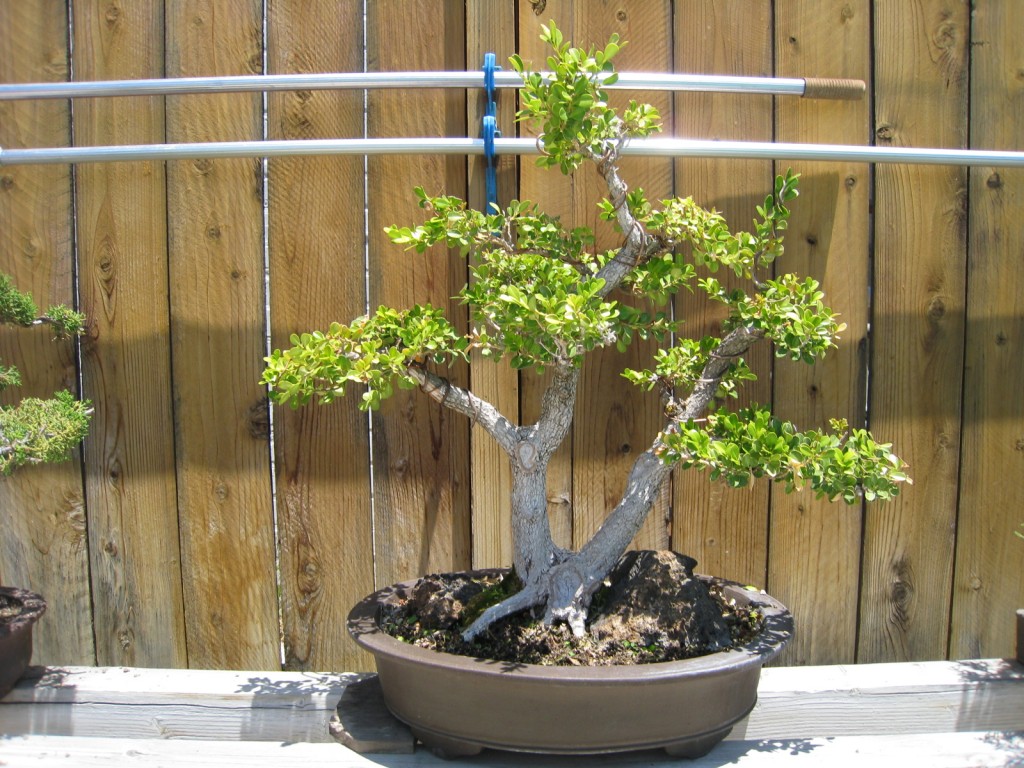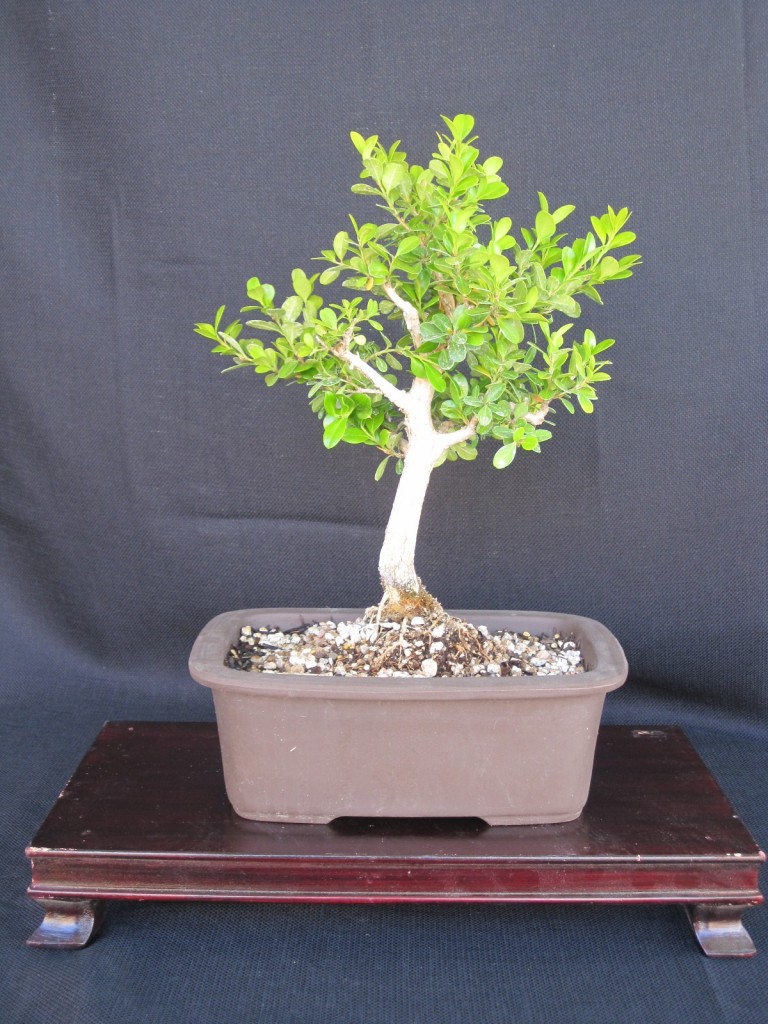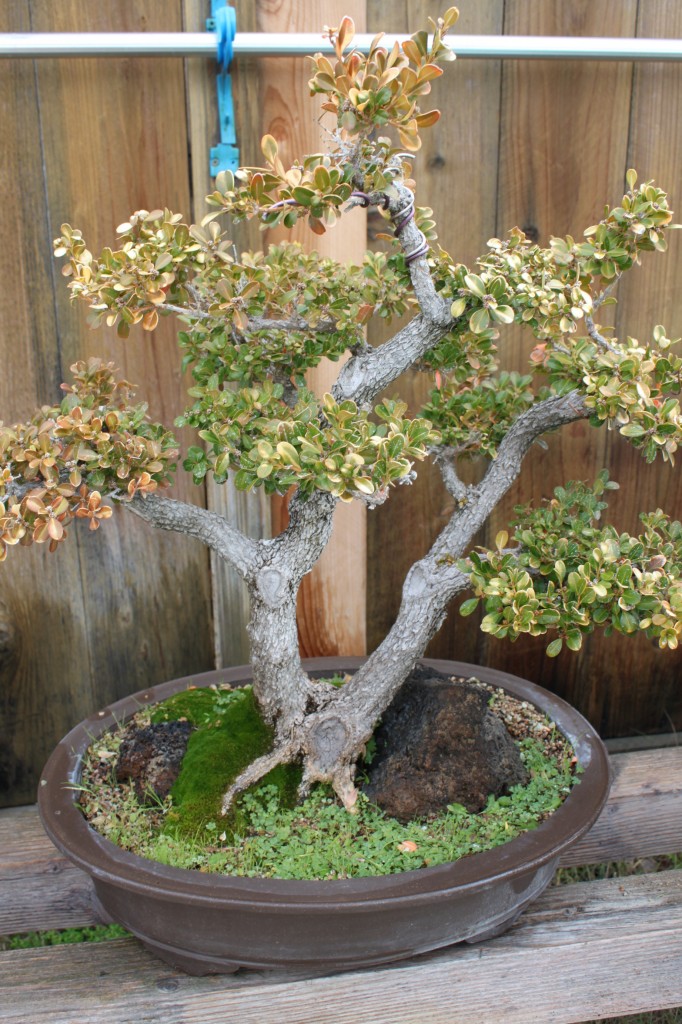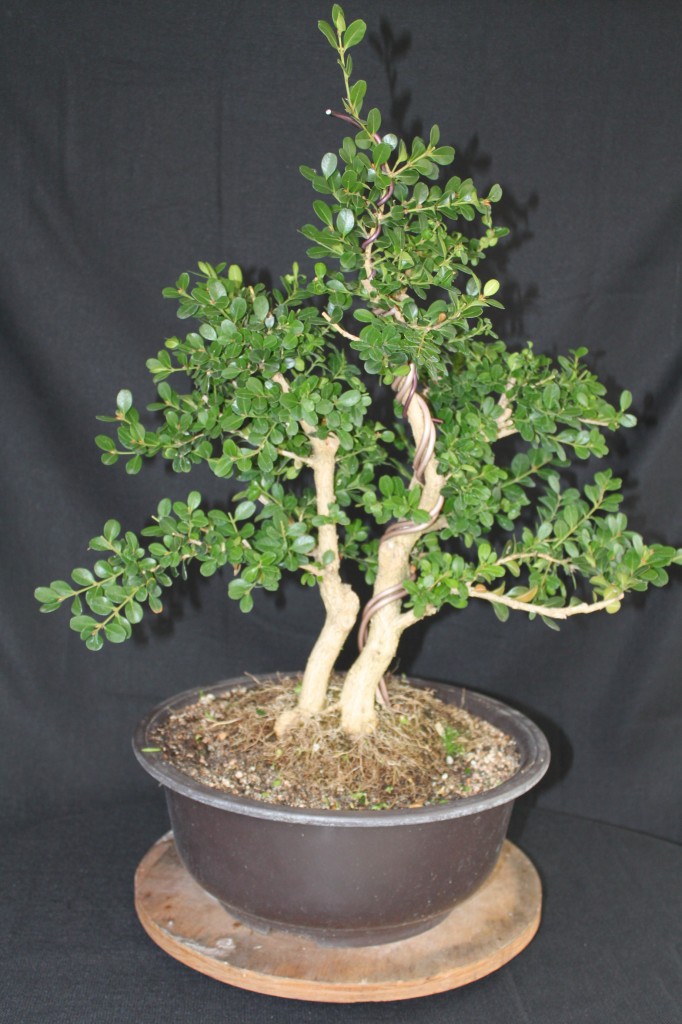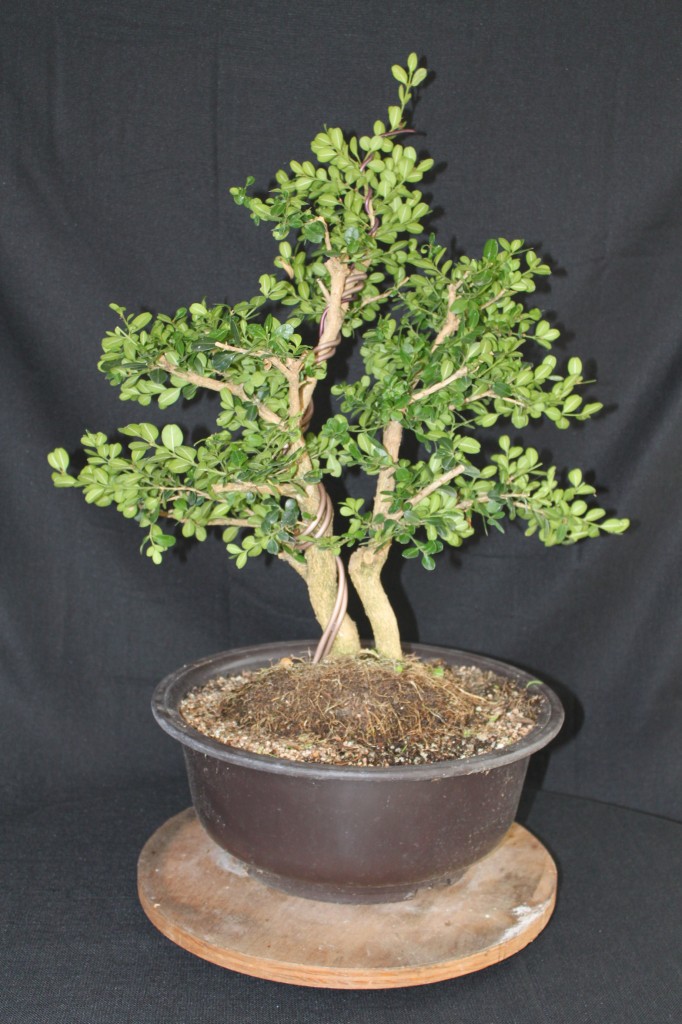Boxwood Bonsai
Boxwood Bonsai
A lowly hedge plant that can have deadwood features to rival the finest Juniper bonsai? Who knew? Boxwoods have small leaves, naturally dense branching, rough interesting bark, fine fibrous root systems, and very hard wood – in short all of the makings of a world class bonsai. Even better, old boxwoods with thick trunks and compact root systems are easy to find – just find someone who is removing a hedge.
I had my first inkling that Boxwood had bonsai potential when I was a young boy. The house we had just moved into had a front porch flanked by two boxwoods that had been kept pruned into vase shapes. Each was between three and four feet tall, and they had probably been there for about twenty years. Dad decided to dig them out and replace them with San Jose Junipers. I said something about how they might make good bonsai trees. My dad shrugged, said something negative back to me and tossed them into the garbage can.
I finally got my chance many years later when I bought my first house. In the front yard there was a solitary Boxwood that had once been part of a hedge. I resolved to collect it. I took my time, and good thing I did. It was getting most of its sustenance from a taproot that went under the driveway. I dug around it, put in sand and good soil, and watered it regularly for a year. The technique worked, and a year later, my Boxwood was ready to be lifted. After that it spent two years growing in a plastic cement mixing tray, and then went into a bonsai pot.
Background:
Buxus is a genus of about 70 species of shrubs and small trees. Maximum heights for the various species are from six to 30 feet tall. Various species are found in western and southern Europe, southern and eastern Asia, Madagascar, Central America, Mexico, the Caribbean, and the northernmost part of South America. The European and some Asian species are winter hardy; the majority of species are tropical, but most of these are not commonly used for bonsai. Boxwood is in landscaping for hedges and topiary. The wood is commercially used in making small furniture items and parts for musical instruments. Of the 70 species, there are four species and a mutation of one of them which are commonly used for bonsai. These are: Buxus Microphylla (Japanese Boxwood); Buxus Sinica (Chinese Boxwood, also called Korean Boxwood); Buxus Harlandii (native to China and also sometimes called Chinese Boxwood), and Buxus Sempirvirens (Common Boxwood or European Boxwood). Kingsville Boxwood is a mutation of Buxus Microphylla which is popular for bonsai. Kingsville Boxwood features tiny, jewellike leaves, and extremely slow growth.
Where to Get One:
Collect one from a hedge that is being removed if you can. This guarantees age, one or more thick trunks to work with, and dense, compact growth already established. If not, then buy a five gallon specimen from a nursery. If you want Kingsville Boxwood, this can only be found in bonsai nurseries. If you see one and you want it, buy it, because it may be a long time before you see another.
What to Do With It After You Get It
If you have a seedling or sapling, grow it on for a few years and make a small bonsai, or use it as part of a group. Better yet, put it in the ground and come back in about ten years – or maybe twenty. If you are collecting landscape or hedging material: Try to collect in mid spring, after the tree has emerged from dormancy, and try to get as many roots as you can. Boxwoods are semi-succulent and tend to have fibrous, somewhat fleshy roots. While these traits would seem to make collection and potting easy, some Boxwoods react rather oddly to having their roots disturbed. Their leaves may turn shades of pink and orange and they may refuse to grow for several weeks or months after being collected or after a heavy root pruning.
Soil and Potting:
Temperate climate Boxwoods are broadleaf evergreens, and can be treated like evergreens for bonsai purposes. Soil should be well draining. An optimal mix is 70-80% aggregate and 20% organic. Repotting should take place in early to mid spring. Boxwoods seem to do better if they are repotted as they are emerging from dormancy or after emerging from dormancy. They tend to flower first before producing vegetative growth, and removing all flowers and fruit is a necessary part of proper bonsai care. The flower buds are insignificant looking clusters of tiny brown knobs found at the leaf junctures. A bonsai that is allowed to burn all its energy on flowering and fruiting will produce little in the way of leaf growth afterward. The temperate climate Boxwoods are frost tolerant, and only need winter protection in the severest climates.
Siting:
Boxwoods are outdoor bonsai. You may get away with growing one in a sunroom or conservatory. The species used for bonsai are frost tolerant, and can be wintered outdoors in all but the coldest locations. Some bonsai guides list Boxwood as being tolerant of full sun, but experience has shown that as bonsai, Boxwoods prefer to be kept in shaded areas. If they get a lot of sun they tend to turn pale, wheras if they are kept in the shade, the leaves turn a rich, glossy green.
Pruning and Shaping:
Pruning and shaping can be carried out throughout the growing season, but major branch removals, deadwood carving, and removals of more than 30% of the foliage are best carried out early in the growing season. Unlike Junipers, with Boxwood you do not need to wait for dry weather to carve deadwood. Boxwood wood does not seem to rot under any circumstances. You can let moss grow around the base of a Boxwood without fear of the trapped moisture underneath rotting the wood. While the wood can be lime sulfured for appearance, it does not need to be for protection. If left untreated, the wood is a light tan in color, and will naturally bleach to an off shade of white over a period of several years. Remove all flower buds that form during the winter or at the beginning of the growing season.
Be careful when wiring a Boxwood. The best time to wire is when shoots are young and flexible. Older branches are difficult to bend because Boxwoods form very hard wood. The techniques used to bend thick branches on Junipers mostly do not work on Boxwoods due to the extreme hardness and density of the wood. Wiring can be left on for the entire growing season, as Boxwoods tend to be slow growing.
Shown above and below are photos of a Boxwood the author used for a recent demonstration. The tree was purchased as 5 gallon nursery stock from the landscape department of a local “big box” hardware store, and shaped at a show sponsored by the author’s bonsai club. Note that only the larger trunk is wired; the rest of the tree is currently being shaped by pruning. In order to wire the upper part of the larger trunk, the wood had to be partially split, and was still extremely difficult to bend.
Styling:
With Boxwood, you have a lot of styling options. Boxwood is amenable to just about all styles of bonsai except cascade. However, since you are mostly working with collected hedging material, likely styles will be informal upright, twin or multitrunk upright, or groups – which can be formed by splitting a multitrunk tree through the root base.
Closing Remarks:
Boxwoods make wonderful bonsai, and specimens are easy to collect from a landscape. If you have no place to collect them from, then plant a hedge and have some bonsai for the future.

